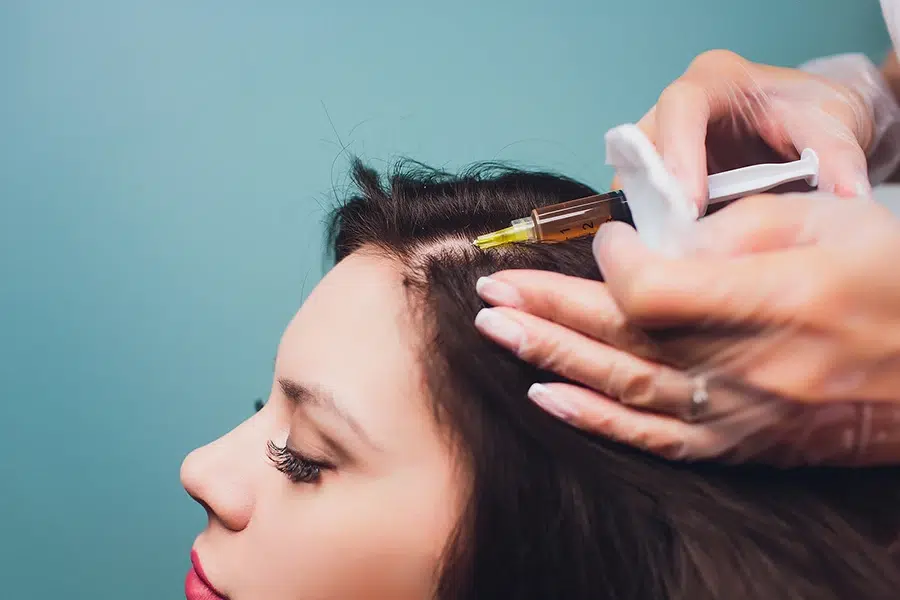PRP Therapy
PRP Therapy for Hair Loss
PRP therapy, or Platelet-Rich Plasma therapy, is a straightforward medical procedure where we draw your blood, process it, and then inject it into your scalp. This treatment, introduced in the 1980s, utilizes concentrated growth factors that encourage new hair growth, thicken thinning hair, and enhance overall scalp and hair health. It can be combined with other hair restoration methods or medical management.
The effectiveness of PRP therapy in increasing hair count, hair thickness, and hair growth phase has been supported by scientific research, making it a popular choice worldwide in recent years.
Who Can Benefit from PRP Therapy?
PRP treatments are suitable for anyone dealing with hair loss, but individuals with early hair loss tend to respond best. It is particularly effective for those with androgenic alopecia, a genetically determined type of hair thinning that usually affects the top of the head. In women, this may manifest as a widening part with normal hair thickness at the back of the head.

Risks Involved
While the idea of needles and blood draws may seem intimidating, PRP therapy generally carries minimal risks. Since your own blood is used, there is no risk of communicable diseases. Most patients experience minimal discomfort, often without any numbing. In cases of discomfort, cool air or ice packs can be applied, and Tylenol may be recommended. Bruising, if it occurs, typically resolves within a week or two and downtime is minimal, if required at all.
Before the procedure, ensure you disclose all medications, supplements, and herbs you are taking. Your provider may advise against PRP therapy if you are on blood thinners, are a heavy smoker, or have a history of alcohol or drug misuse. Additionally, individuals diagnosed with certain medical conditions or disorders may not be suitable candidates.
The PRP Therapy Process
PRP therapy involves three steps, typically administered in three treatments spaced 4–6 weeks apart, with maintenance treatments every 4–6 months:
Blood Collection:
We draw your blood, usually from your arm, and place it in a centrifuge, a machine that separates different components of fluids based on density.
Separation:
After about 10 minutes in the centrifuge, your blood separates into three layers: platelet-poor plasma, platelet-rich plasma, and red blood cells.
Injection:
The platelet-rich plasma is extracted and injected into the areas of the scalp requiring increased hair growth.
Cost of PRP for Hair Loss
PRP therapy usually consists of three treatments over a 4–6 week period, followed by maintenance treatments every 4–6 months. The initial three treatments typically range from $1,500 to $3,500, with individual injections costing around $400 or more. Pricing depends on factors such as your location, equipment quality, and the inclusion of nutritive components.
Ready to Take the First Step Towards Fuller, Healthier Hair?
If you’re looking to combat hair loss and boost the thickness and vitality of your hair, consider PRP therapy. With a proven track record and minimal risks, it’s a reliable option worth exploring. Don’t wait any longer to regain your confidence and achieve the hair you desire.

Contact Us Today to Schedule a Consultation
Our experienced team of Maryland hair loss professionals is here to answer your questions, discuss your options, and guide you through the PRP therapy process. Take action now and embark on your journey to a more vibrant and luscious head of hair.
Don’t miss out on the opportunity to enhance your hair’s health and appearance. Schedule your consultation today, and let’s work together to achieve the results you’ve been dreaming of.

